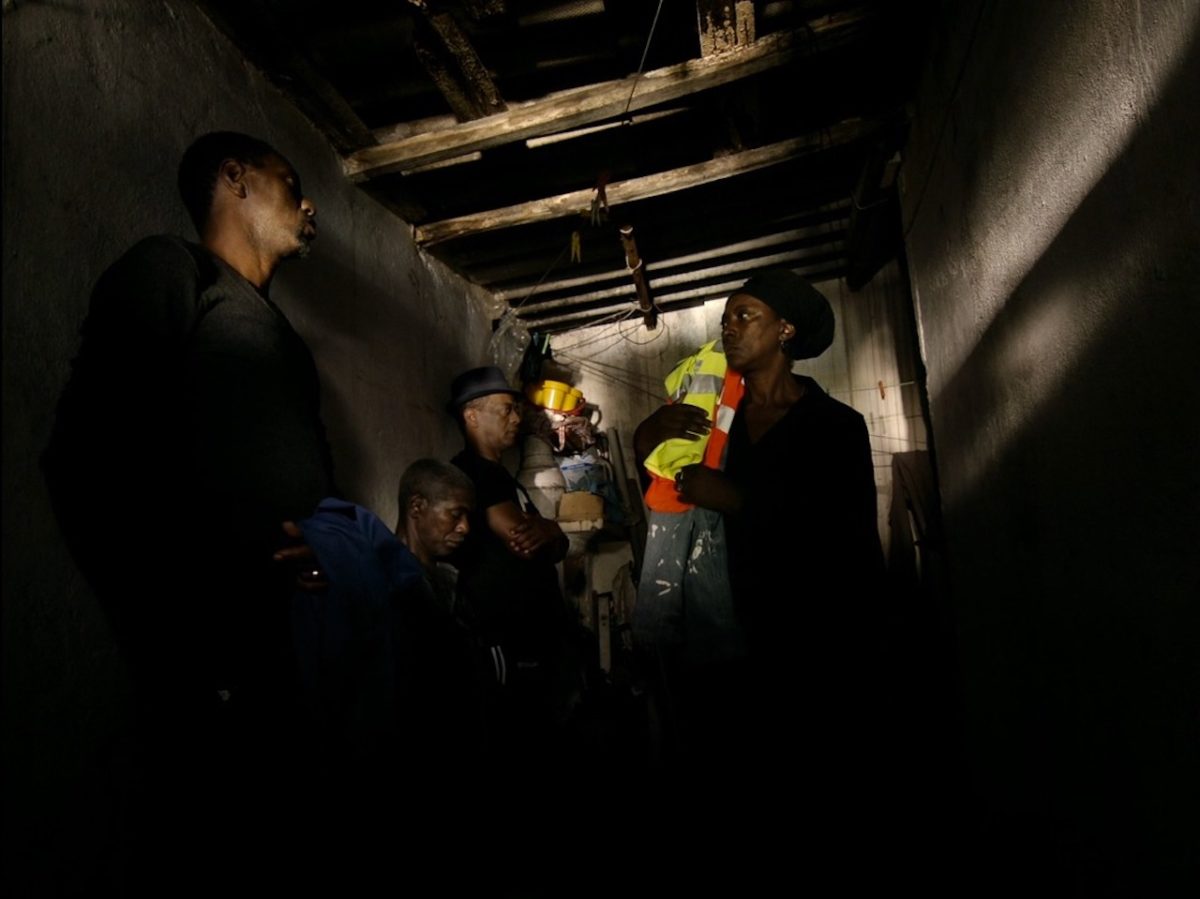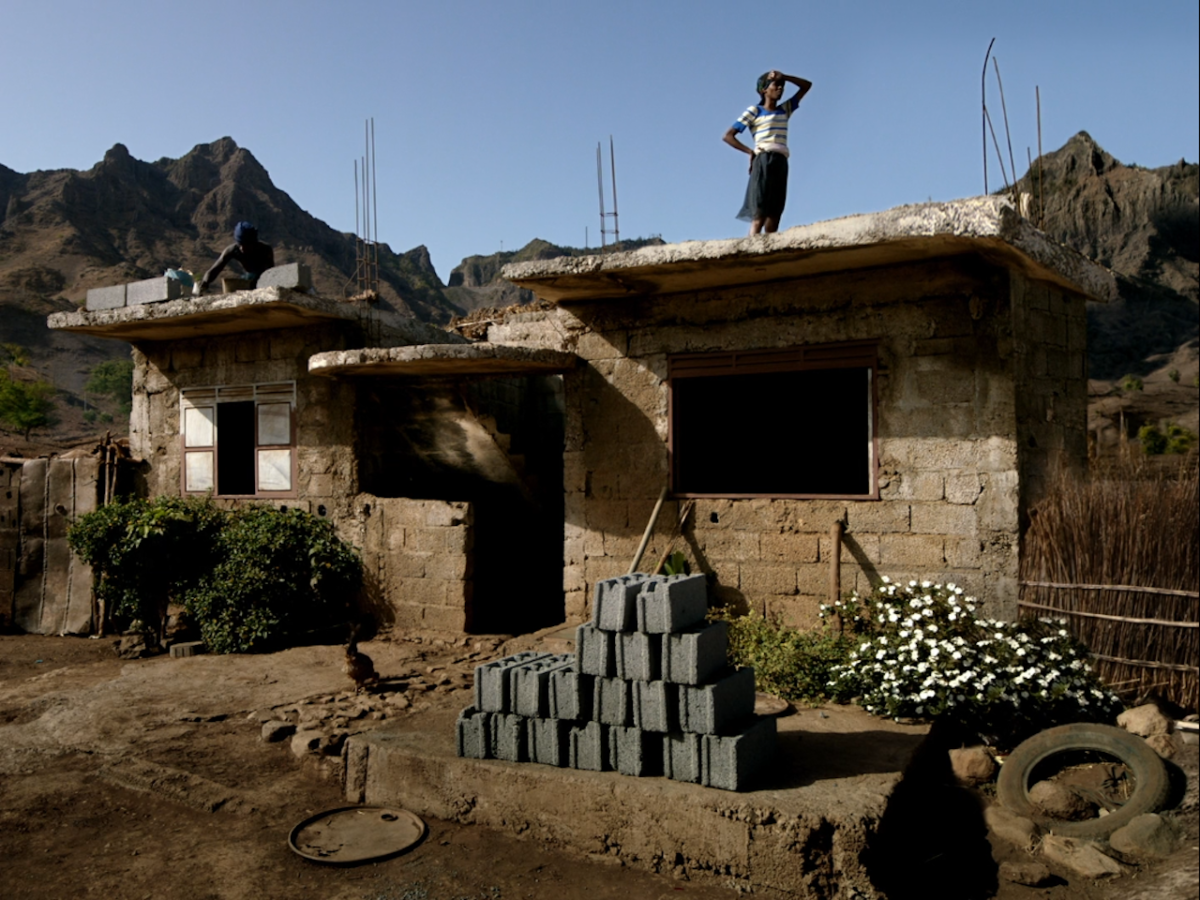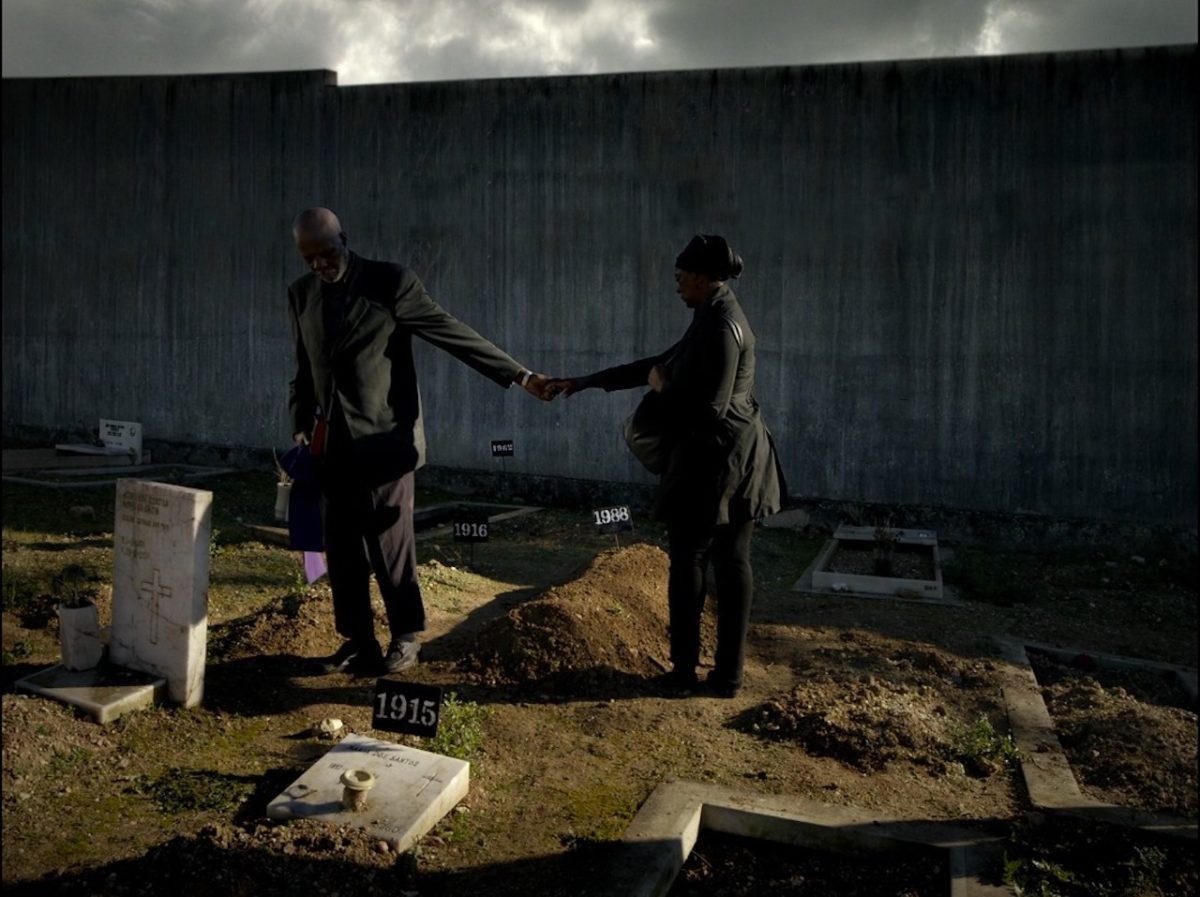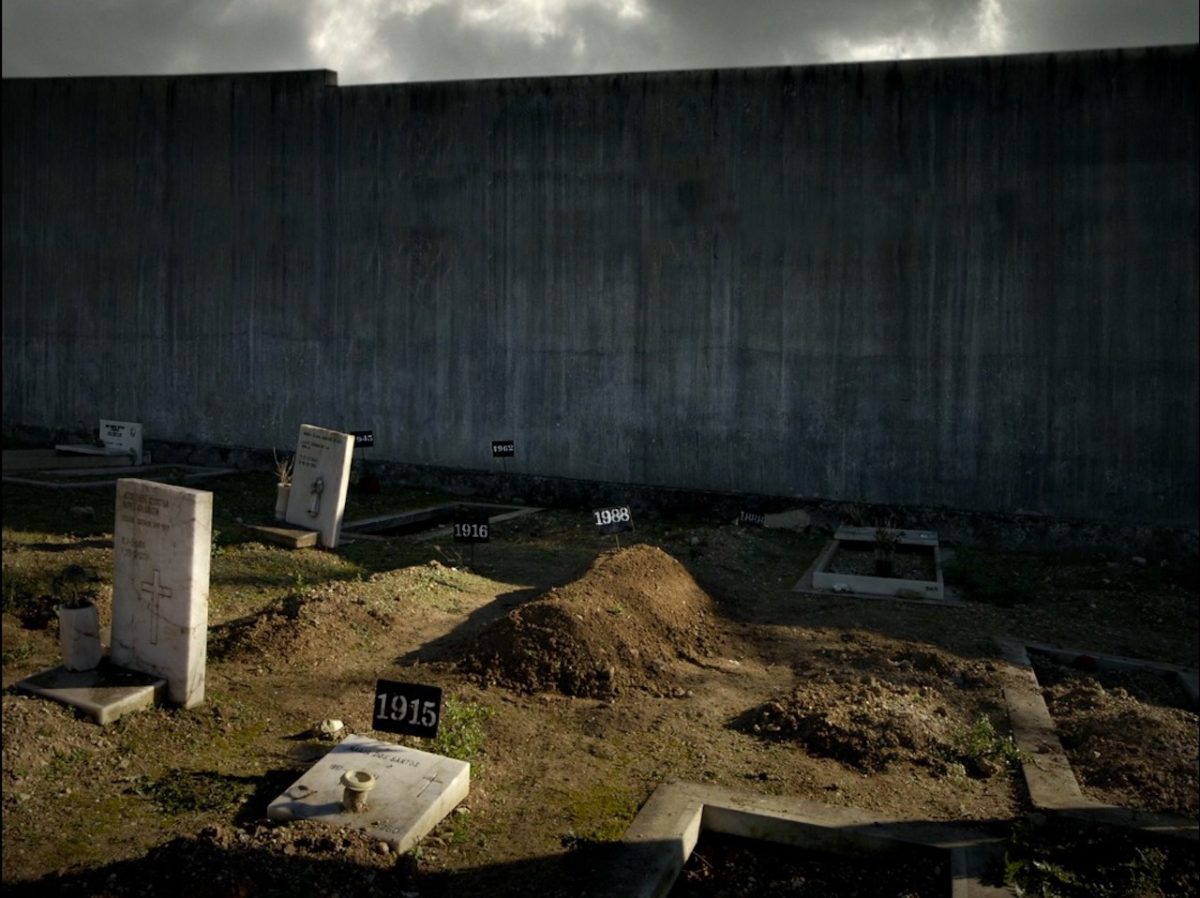There are doubtless worse things to be called than ‘the Rembrandt of the Ghetto’, but that doesn’t mean Pedro Costa should take it as a compliment. This characterization, volunteered by the critic Armond White and indicative of an established charge, says as much about the Portuguese director’s pictorial arrangements, which are largely founded on the interplay between darkness and light, as it does about his choice of subjects, who mostly dwell in the destitute regions of Lisbon’s urban sprawl. While White’s statement leaves an impression of accuracy, the deeper insinuation obfuscates the evidence. Obviously, Costa doesn’t claim to produce paintings in the manner of the Dutch Golden Age. More to the point, his films tend to a complex assessment of Black, indigent people and their homes, one neither reverential nor damning but multifarious and difficult. White’s challenge lingers, nonetheless. While Costa’s initial intimacy with the material appears to be frank and hard-headed, his final treatment is often celestial and romantic. Aided by cinematographer Leonardo Simões, Costa’s canvases sit on the cusp of daytime, as if the poor spend the majority of their lives in the shadows and under twilight.
Depictions of poverty are inherently dubious. The viewer, after all, is generally circumspect of the camera that mediates deprivation and of the filmmaker who pursues it. This wariness precedes consideration of the particular dramatic and aesthetic elements employed by Costa, whose interventions transform techniques of documentary realism and supposedly honest testimony. Audience suspicion towards this type of filmmaking is rooted in a paradox of expectation. The conviction to show the impoverished as they are is to show, unavoidably, what they are without. These problems of subsistence open up a visual fissure. By revealing and revelling in the financial gap, sometimes through sensibilities of dream and fantasy, Costa invites accusations of aestheticism and exploitation. The normative rebuke to Costa could be summarized as follows: you intend to show the lives of those in the social margins through stylized drama and images; instead, you should elicit immediate pity towards their exclusion, a sense of injustice, or a lament. This is the cinematic duty apparently bestowed by privilege.

Vitalina’s arrival
Costa’s most recent film, Vitalina Varela (2019), advances these conversations on his body of work. It is about, and named after, a woman who arrives in Portugal from Cape Verde, looking for her estranged husband. Forty years earlier, this man, Joaquim, had left Vitalina behind on the island, clutching at a sack of false promises. They were building a house together in the mountains. The film shows that Vitalina’s appearance has come too late for a reunion, because Joaquim’s funeral has already taken place, three days beforehand. Vitalina assumes his household in what was once the district of Fontaínhas, which is now a desecrated neighbourhood that ceases officially to exist. That Vitalina is a real person, to which these approximate events happened, and that she appeared in Costa’s previous fictional feature, Horse Money (2014), fuels the concern that this appropriation of her real experience is intellectually and ethically suspect. Costa’s use of conspicuous tableaux and baroque chiaroscuro to tell a tale of adorned suffering provokes an observational dissonance and complicity that is difficult to confront. Vitalina Varela is a valuable film for mapping this confrontation, as it dares the viewer to abhor its aestheticizations of the dispossessed. This complicates the moralizing critical impulse that can efface a discomforting truth: that those who are without tend to aestheticize themselves.
To address Costa’s narrative and visual style requires an acknowledgment of how it both absorbs and subverts the traditions of old, classic Hollywood. Its debt to John Ford, for example, is embossed in interview transcripts, because Costa is abnormally forthcoming about the exigencies of his practical and creative processes. Vitalina Varela draws on Ford’s interpretation of the epic western, insofar as Vitalina functions as the resolute, friendless figure who stakes out the empty smallholding, the contours of which ache with absence. Vitalina’s entrance into Portugal, before she steps off the aircraft, is framed as if she were a returning gunslinger or freed convict. Her bathed silhouette at the plane door gives a startling illustration of the character’s sense of predestination and resolve. This could be likened to the opening shot of Tom Joad (Henry Fonda) in Ford’s adaptation of The Grapes of Wrath (1940), which portrays him as an impersonal nomad, strolling up the highway in declining brightness. The relationship between Tom’s silhouette and shadow reveals the line between light and not-light, the oscillating boundary of embodied movement, which prefaces his transformation from a paroled delinquent to the ultimate defender of the disinherited. This focus on bodily figuration invites a return to Costa, who gives much of his latest film to Vitalina’s physique, sometimes distorted in angular repose, but who otherwise deviates from Ford’s representative signatures, wider politics and more orthodox sightlines.
For one, Costa’s individuated comprehension of Vitalina circumvents Ford’s combined appraisal of the Joad family. Whereas Ford shoots horizontal scenes of shared, communal suppers to punctuate the narrative and solicit sympathy from the audience, Costa emphasizes Vitalina’s separation from her new neighbours by implementing constant restrictions on the viewer’s field of vision. In both films, dinner tables mediate human relationships, refocusing the Joads’ convivial interactions and Vitalina’s detached austerity, respectively. As the critic Jonathan Rosenbaum notes, Costa’s delimiting techniques complicate not only our immediate perception but our capacity to understand and relate to the presented events: “Costa […] discourages identification by refusing to shoot reverse angles, Hollywood’s conventional way of drawing us into the characters’ space.” For Rosenbaum, this visual impediment creates “a passageway designed for coming and going, not a simple portal that opens onto the truth.” This helps to position Costa’s aesthetic beyond assertions about the objectifying gaze and the consequent suffocation of perspective; it also suggests something specific about the religious through-line in Vitalina Varela, which provides a deliberate artistic lexicon for its subject.
Vitalina’s spiritual beliefs manifest themselves audibly and visually within an otherworldly limbo, populated by a chorus of addicts and suitors, whose static postures and blank incantations rather suggest an earthly purgatory, the torpid plot in which they are all trapped. But what at first might appear to be a study of inertia wrought by hardship could be instead received as a graphic encapsulation of divine self-sufficiency. During a talk at the 2020 edition of Film Fest Gent, Costa described how Vitalina exuded a condition of “grace” or “the scared,” which he sought to insistently capture. Despite his stated discomfort with organized religion, Costa pays heed to Vitalina’s Catholicism by framing her through candid portraiture and drawing attention to icons of the cross, at one instance engraved onto a wooden stump in blazing azure, styled as an ambiguous ‘X.’ This contrived approach to evoking Vitalina’s faith provokes the anxiety that Costa is indeed deifying his subject, and his subsequent comments about how residents in the slum amount to “the best people” in Portugal recall the central implication of White’s criticism: that Costa’s advantaged position obscures his aesthetic judgement and, by doing so, his films fail at the level of representation.

Rancière’s defence
The French philosopher Jacques Rancière has offered probably the most robust defence of Costa’s political aesthetics. In an essay that accompanied the Costa retrospective at the Tate Modern in 2009, Rancière writes: “The accusation of aestheticism can be met by saying that Pedro Costa has filmed the places just as they are. The homes of the poor are on the whole gaudier than the homes of the rich, their raw colours more pleasant to the eye of the art lover than the standardised aestheticism of petit bourgeois home decorations.” This is in evidence in Vitalina Varela, where the walls of Vitalina’s new bedroom are mottled with designer handbags. These lurid decorations presumably had an economic function, as a partial source of Joaquim’s income when he was alive. Vitalina, too, does not simply survive in funereal blacks. Brooding in the kitchen, she wears a dress, with hues of marine blue, strikingly draped on her black skin, just perceptible in the otherwise enveloping shadows. She also owns perfume from Zara, the high-street department store. These flashes of colour and scent, surrounded by bruised cement, speak to a broader tactility and erotics in Costa’s image-making. The viewer is supplied an intimate relationship with Vitalina’s body, from head to toe, invited to examine its heft as she grieves, cooks and washes herself. Her eyes burn at the outside, gentle cacophony; her bare feet secure her to the flight-steps as she departs from the plane and into a new world.
Rancière’s other crucial comment is to do with process, which Costa’s image-making only insinuates. It takes a rhetorical form: “What politics is this, which makes it its task to record, for months and months, the gestures and words which reflect the misery of that world?” Costa’s immersive method of filmmaking continues for Vitalina Varela, and he has made much of the fact that his crew often joined Vitalina in her day-to-day activities. Vitalina received practical assistance in her life and was subsequently given a cinematic language with which to articulate it. This describes a transaction between filmmaker and subject that gives reason to pause. For example, Costa’s embedded approach within a disadvantaged Black community could be perceived as an act of indulgent, sentimental racism. Rancière’s question avoids the concerns of race but is predicated on the requirement of misery, with which Costa’s film is not exclusively concerned. Vitalina Varela is specifically about bereavement, or Vitalina’s state of feeling bereft, which may include misery but probably constitutes a more complex poetics, one infused with Vitalina’s experiences as a Black woman, among other sources of identity. To accuse Costa of aestheticizing poverty, then, is likely beside the point, although his direct involvement in Vitalina’s life maintains a stench of real-life paternalism and misguided noblesse oblige.
The more expansive understanding of Costa’s poetics could be labelled the art of being without, the dominant formal and procedural conceit of his work, which provides an analytic framework that incorporates both income inequality and the associated emotional states of loss and mourning. Vitalina’s loneliness and window-dwelling indicate a classic rendering of melancholy, as the shafts of daylight pierce her solemn residence. Never mind that Joaquim’s house is a botched job. The roof is broken; the rain comes in. This interweaving of interior suffering and cowboy construction is obvious enough, but the foundations of the building offer more than a cheap route to metaphor. Not everything is an inspiration for memory, a glimpse into the past. Sometimes a door is just an ordinary door, leading into the next room. The industrial substance central to Costa’s corpus is irrefutably concrete, the fundamental resource for a solid and sustainable structure. Costa holds a nostalgic attachment to these buildings, in whatever state of dilapidation, because he bemoans the new types of social housing, insisted upon by the local authorities, which cut the link between the homeowner’s labour and eventual homestead.
It would be remiss, then, to ignore Vitalina’s flashbacks to Cape Verde, scorched with sun, which dapples the home she was building with the man she loved. This is not a cheap categorization of sentiment, either. When Vitalina is alone and talks about the double loss of her husband, both now and forty years ago, functioning as rare exposition for the audience, she mentions three things: “There is nothing left of that love, of that clarity.” It is the third abstract noun, as much as it is the second and first, which defines much of Vitalina’s forlorn search for meaning in the film, the uncertain tethering from which she negotiates her state of being without. As the sly, comic awareness of a Beckettian void (“nothing”) rubs against the noble pursuit of cinematic humanism (“love”), “clarity” gives the inhabitants of Costa’s world an anchor, from which to withstand threats to living and carry onwards. For Vitalina, to be clear is to have purpose, and her precise recollection and recitation of dates, among the scarcity of dialogue, is characteristic of her claims to existence, just as it is cautionary about life’s transient value.

Elizabeth’s heart
“We married in the civil registry on 14th December 1982, and in church on 5th March 1983,” Vitalina communicates to her recently deceased. Joaquim is now two candles, a rosary, and a photograph. Costa’s regular actor, Ventura, who plays a fraught and desultory Catholic priest, tells Vitalina that in order to speak to her husband, she must learn Portuguese first. So, she mouths the text of an old newspaper cutting in staccato murmurs: “In July 1939, the world trembled in fear of Hitler and the Germans, but the heart and thoughts of Elizabeth were occupied with things far less dangerous.” The ironic pairing of private life and public history fuses together on the trivial vagaries of the calendar. Is it sufficient that Vitalina’s life, too, rests upon an accumulation of dates, a depository of names and facts that together constitute a personal record? Vitalina Varela dramatically and aesthetically insists upon this inquiry. In fact, Costa’s unified depiction of Vitalina as without husband, home and clarity shows that the markers of space and time hold only limited value.
The fundamental inadequacy of spatial and temporal measurements is illustrated most profoundly by the spare characterization of a young woman called Marina, in the throes of a fatal drug addiction. In Costa’s interpretation, her death is brute fact, and deaths, as products of deprivation, are mostly senseless. Near the end of the film, Vitalina and the priest attend Marina’s funeral. A close-up reveals the shaking insertion of a thin, scratched plate of metal, with a shovel laid across it. The year of Marina’s birth is painted in white. This burial tag has few answers to the questions Vitalina is posing, because the film does not allow us to perform this rescue on her present. Instead, the unmarked graves gesture to her pervasive past in the home she once knew. Now displaced, Vitalina stands to the right of the mound and looks downwards. What does it mean to lose so much and be left without? In Marina’s case, and from Vitalina’s perspective, the answer is arbitrary: 1988, that’s what it means.
Consider everything that is omitted from this inscription. Consider its topographical context, resting among the material catalogue of signs, a sea of numbers. Here, the graveyard is a symbol of a community doing just enough, memorializing those who’ve gone and comforting those who endure. Vitalina Varela thus attempts to justify its representation of those who are without through solemn celebration of their common persistence. The artful unity and elegant ordering of scenes, whether it is the preliminary introduction of daylight or the reprise of the abyssal alleyway, deliver a forceful riposte to the superficial strands of modernism that articulate fragmented subjective experience through fragmented storytelling. They instead mark a duty of care to the subjects, shown as entities in their own right and as part of a sociological group. (To be clear: Costa’s work counts for little to those who’ve died in Fontaínhas.) What marks the art of being without, then, is the effort to show an individual’s experience as symptomatic of a collective existence, by leaving in the repressions and discontinuities that this conflict, of inner being and external world, inescapably generates. Costa’s film achieves less when deemed to be an ode to universalism, and more as a claim for a shared aesthetic sensibility wrung from a single documented life, demonstrated through the studied textures of its images and the calibrated rhythms of its narrative. These authorial moves locate the gap that cinematic art expands, the line of inclusion and exclusion, typically known as the insoluble problem of depiction.

